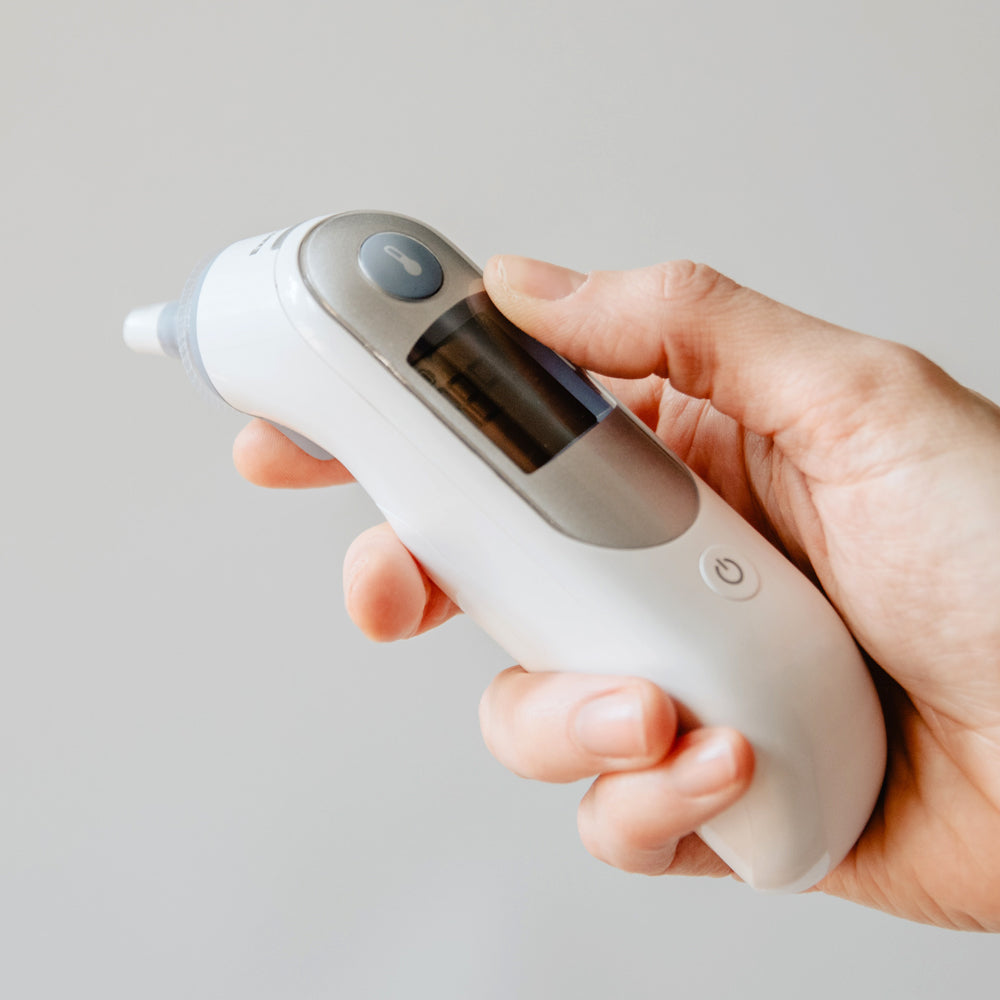What Temperature is Considered a Fever?
A body temperature of 38°C (100.4°F) and above is considered a fever. While there many explanations as to why a person could be experiencing a high temperate, such as physical activity, menstrual cycle or just walking in the sun for too long. Its best for the individual to rest in a cool environment for 10-20 minutes before taking their temperature again if they feel fine and do not have any other symptoms.
Does a Fever Mean You Have COVID-19?
No, having a fever does not mean you have COVID-19, only a medical test or approved test kits can determine this. However. according to the World Health Organization statistics:
- 1% of cases reported fatigue.
- 7% of cases that reported dry cough
-
9% of 55,924 laboratory-confirmed cases reported a fever.

Are There Different Temperatures To Indicate Fever For Child and Adult

- Children: 38°C (100.4°F) and above
- Adults: 38°C (100.4°F) and above
- Older adults: 37.8°C (100°F) and above
- Or 1.1°C above the person's usual value.
It is also important to note that body temperature taken from different parts of the body can vary slightly, typically places to take temperature using a non contact thermometer would be the head, typical places to take temperature using contact thermometer include; mouth, armpits, rectum.
What is a Normal Human Body Temperature?
The widely accepted normal body temperature ranges from 36.5°C (97.7°F) to 37.5°C (99.5°F).
Human Body Temperature Chart
| Fever Temperature Chart | ||
|---|---|---|
| Hypothermia | <35.0°C | 95.0°F |
| Normal | 36.5 - 37.5°C | 97.7 - 99.5°F |
| Fever / Hyperthermia | >37.5 or 38.3°C | 99.5 or 100.9°F |
| Hyperpyrexia | >40.0 or 41.5°C | 104.0 or 106.7°F |
A New Average Body Temperature?
There are some news online regarding a new average body temperature and that it should be lower than the widely regarded average of 98.6˚ F (37˚ C). This is because we first established this average in the 1800s where a German physician, Carl Wunderlich, measured the temperatures of around 25,000 people, via their armpit. He found that 98.6˚ F (37˚ C) was the average temperature and we have been using this data since.
The problem with this measurement is several fold;
- Only the armpits were used to measure when several other points could have been considered too.
- It wasn't noted what time of the day the temperatures were taken and we know that body temperature changes throughout the day.
- Temperatures also vary between genders and ages where women and younger people have higher readings compared to men and older people.
- More recent studies showed that the average temperature is lower at around 97.5˚ F (36.39˚ C).
Why is the Temperature getting Lower?
There are a few possibilities:
- The initial temperature sampling didn't take into considerations of different measuring locations, age, gender and time variations.
- Lower metabolic rate; this greatly determines your body's temperature and with modern day treatments and lifestyle, this could have dropped since 1800s.
- Lower rate of infection and inflammation; in 1800s there were many diseases and inflammatory conditions which could have increased body temperatures.
Conclusion
Despite more recent studies showing a lower average body temperature, this is not a concern and medical experts will continue to use the average as a reference point.
Bonus: Are you looking for a Human Body Thermometer?
For businesses and large organisations we recommend our IR0280H Thermal camera. Its the all in one thermal screening solution that effectively monitors the temperature of every passing individual without having to stop them freeing your staff from manually checking or ensure each individual is checked.
Why Should You use IR0280H Thermal Camera


